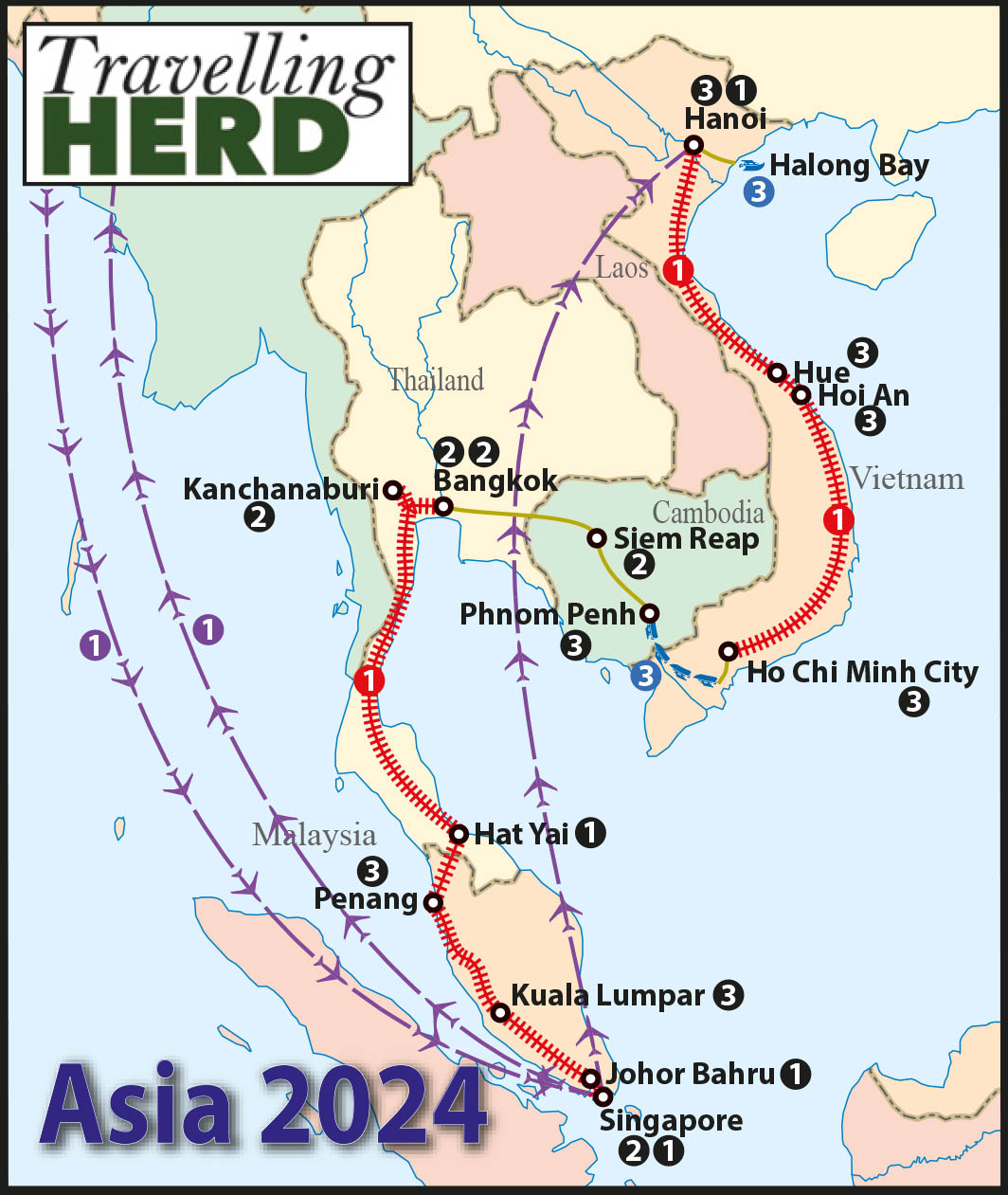Read this blog: The one where Robert is groomed by a rat
Sunday 31st March 2024
The hotel receptionist had very helpfully phoned and made a booking for us and we had arranged with our tuk tuk driver from the day before to collect us in time to get to APOPO for the 10:00 tour. Unfortunately, he failed to appear. Showing him more loyalty than he had shown us, we waited for a few minutes in case he appeared. Apparently he was on another job. Fortunately there was, as usual, another tuk tuk waiting outside the hotel in the hope of picking up a fare. Although we arrived about 10 minutes late, luckily the tour had not yet started.
Joining a group tour costs $10 per person and this is money very well-spent.
APOPO was co-founded by a Belgian and the name is an acronym standing for “Anti-Persoonsmijnen Ontmijnende Product Ontwikkeling” which translates to Anti-Personnel Landmines Detection Product Development in English. The acronym really is much easier.
The tour starts with an explanation of how Cambodia became one of the countries most severely affected by landmines. There is still unexploded ordinance from American bombing in the 1970s referred to as ERW [explosive remnants of war] and sadly both sides planted landmines during the Cambodian civil war.
A patch of ground has been prepared with various types of [disarmed] mines partially visible to illustrate the potential dangers. Cambodia sadly has over 40,000 amputees which is one of the highest rates per capita in the world. During the rainy season the floods cause the ground to shift and mines may sink or rise depending on the conditions.
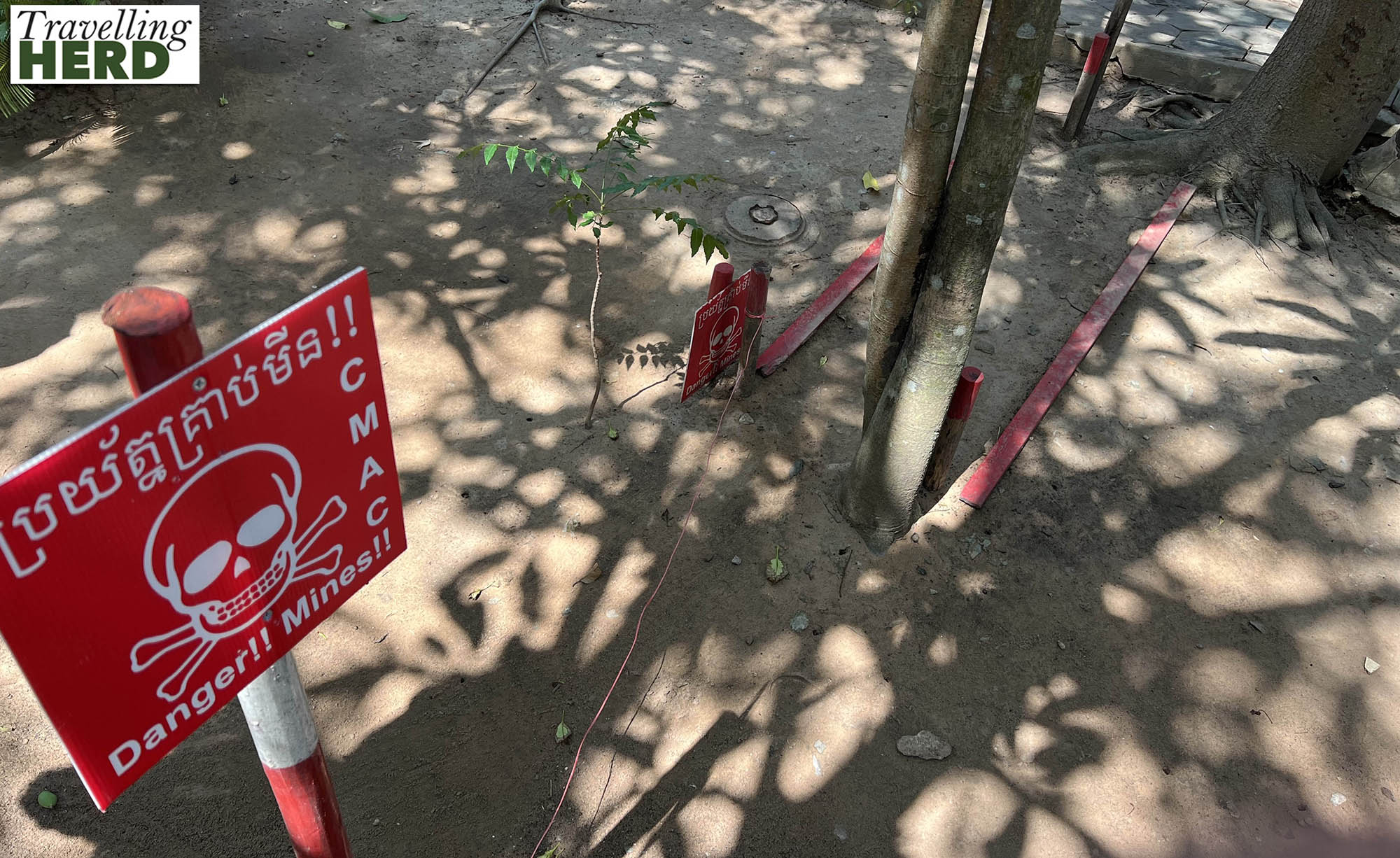
In poor rural areas where children have few toys, an unexploded bomb can become a plaything, thrown at fruit trees or used for a game of catch with tragic consequences.

There are over six million landmines still in Cambodia. For the past 25 years APOPO has been working to clear them both here and in other countries across the world.
To do this Belgian Shepherd dogs and African giant pouched rats [also called Gambian pouched rats] are trained to detect the chemical compounds in explosives.
The dogs are known as technical survey dogs and can smell even a tiny amount of TNT from a metre away. Especially useful over rough terrain with dense vegetation, the dogs are trained to sit to indicate when they discover explosives so that the location can be marked. With their help, large areas of land can be safely cleared of undergrowth and vegetation and returned to agricultural use in villages to help to support rural communities.
Once the dogs have identified where TNT is present, the rats are used to go over the ground meticulously inch by inch. African giant pouched rats weigh around 1.3kg when fully grown so are not heavy enough detonate a mine. The APOPO guide [below] stressed that, unlike in many films, an explosion would be instantaneous.

After the HeroDogs, come the HeroRats. First, Alvy the HeroRat was brought out and introduced to everyone on the tour.

Since the rats are nocturnal, the detection work is usually done in the early hours of the morning before the temperature rises and the sun is too bright.
Two handlers and Alvy gave a live demonstration of how they work.
A simulated minefield had been laid including some innocuous uncontaminated metal as well as a tiny amount of TNT. In the field, dogs would already have identified both the risk and safe paths for the handlers.
The two sides of the area to be worked are marked out with tape measures and a third measure is run between them at ninety degrees so that the exact position of any unexploded mines can be precisely identified and noted. The rats wear harnesses which are attached to a line running perpendicular to the sides of the working area. The handlers each have one end of the line attached to their leg while the rat moves across the ground between them. Once a section has been covered the handlers take one step further into the area and repeat the process.
In Cambodia there are 43 trained rats working as teams in several different sites across the country. They are trained to detect explosives and they each have their own individual way of showing that they have found something. Some, like Alvy [see feature photo] will scratch at the ground to mark the presence of explosives, while others will circle the spot. The handlers send them back over the same ground to double check.
For several reasons, this system has been found to be both safer and more effective than using people with metal detectors which will pick up every piece of shrapnel and discarded metal whilst the animals only search for and identify TNT [see video above]. Some landmine casings are made of plastic and so would not be detected at all without the help of the rats [see also Video of the day].
Once the bombs have been identified and the position logged, disposal experts will arrange removal usually through a controlled explosion.
Rats and their handlers can cover an area the size of a tennis court in 30 minutes while it would take four days to clear the same area using metal detectors. Even working at this rate, with the current level of resources it is estimated that it will take 100 years to clear all the landmines from Cambodia.

Unfortunately the rats cannot work in paddy fields as the water interferes with their sense of smell so these areas still have to be cleared by people.
Once he had finished detecting and been given a treat, Alvy was released from the line and returned, by himself, straight to his carrier.
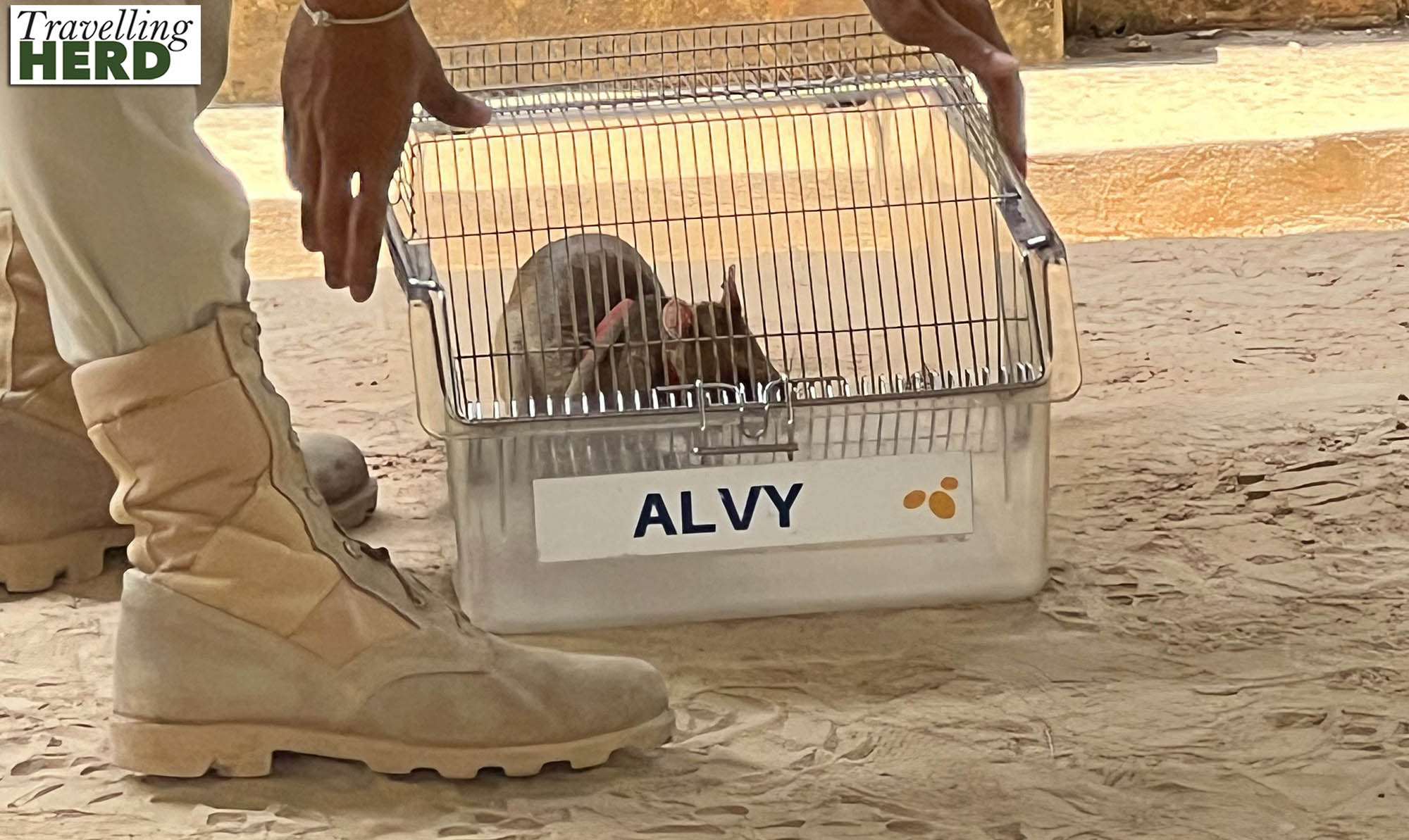
Although this was not part of the demonstration, as with many work environments, there is a hierarchy. Once the fresh recruits have worked an area, a more senior and experienced ‘supervisor’ rat will cover the same ground to confirm the findings.
The rats live for about eight years and this will involve one year of intensive training to prepare for a five year working life followed by two years of retirement when they continue to be cared for by the handlers they are familiar with.
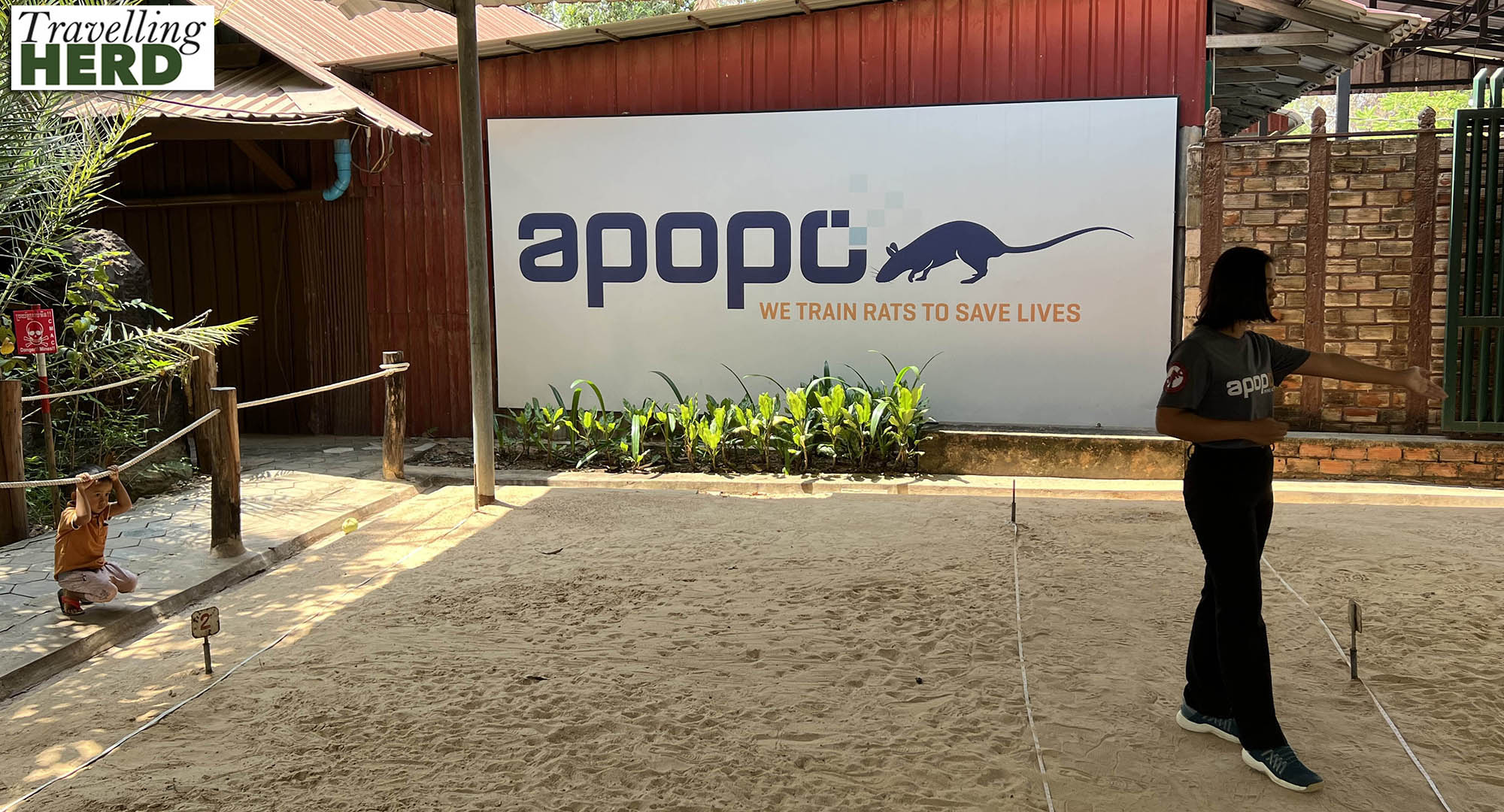
Since the introduction of scent detection animals in 2015 there have been no fatalities amongst either the animals or their handlers. In that time they have made 33 million square metres of land safe by locating 49,000 landmines and other hazardous items.
After the demonstration those who wanted to were able to hold a rat for a brief period. The rats are allergic to sun screen so anyone wanting to do so had to wash their hands and arms. Alvy was joined by a female rat, named Valerie and her handler. Matilda noticed that Valerie had a small semicircle missing from her left ear and this was apparently from a blast.

With most people, Valerie tolerated being held but after a short while seemed to want to return to the familiarity of her handler. However, when it was Robert’s turn she immediately climbed up onto his shoulder and started to sniff at him and groom his beard, despite the handler’s efforts to discourage her [see Video of the day].
Matilda thought there might have been some left over breakfast in his beard, but perhaps Valerie felt she had found a kindred spirit.
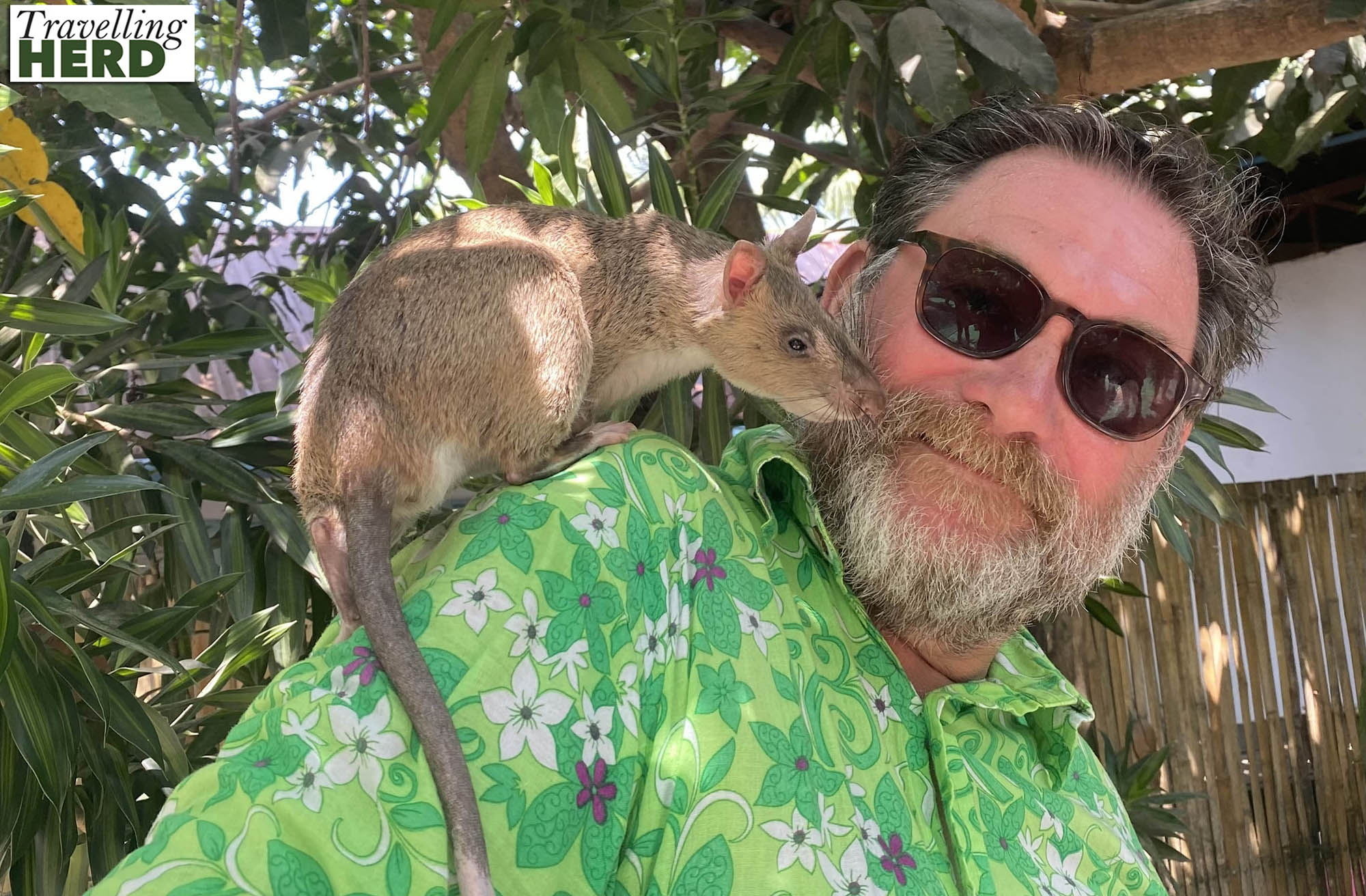
It was very endearing: could Valerie sense something Matilda was missing?
After holding the rats, there was a short video to watch and then a small shop with displays of the type of device the rats had detected.

As well as detecting TNT HeroRats can be trained to search for people buried in rubble after earthquakes, the presence of TB bacteria in a mucus sample, cancer and pangolin, the most trafficked mammal in the world. Heroes indeed.
After APOPO, we went to the Angkor National Museum. The building itself was impressive with a wide spiral walkway sloping up to the second floor, reminiscent of the Fiat factory in Turin as immortalised in the film The Italian Job.

Many of the items on display were discovered in and around the sites in the Angkor Archaeological Park and the museum aims to explain the culture and influences of the Khmer Empire.
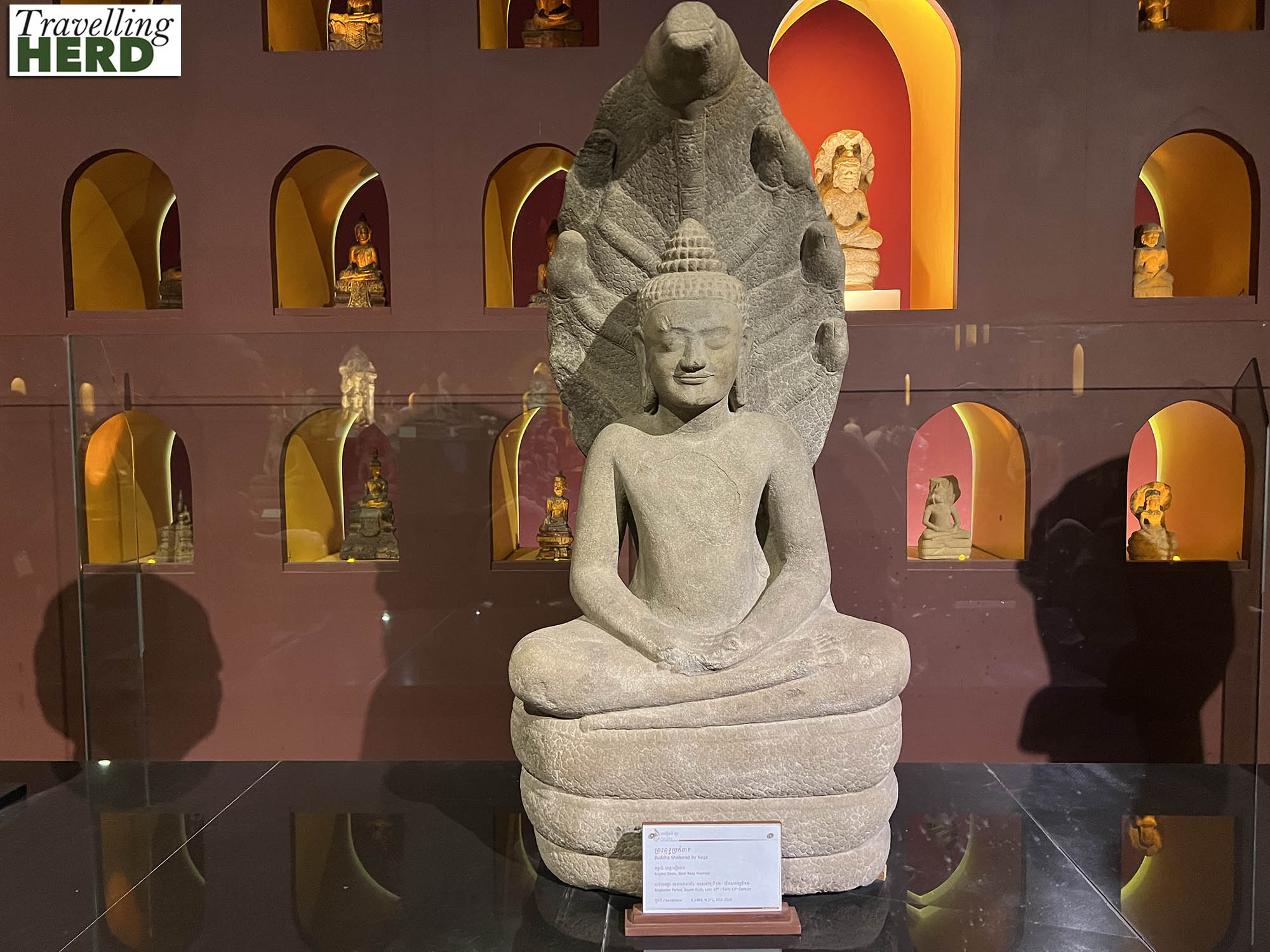
However, one of the exhibition rooms is the Gallery of 1,000 Buddha and there has been criticism that many of the statues are Thai influenced rather than reflecting the style of the Angkor period.

The central interior courtyard has a beautiful turquoise water feature which was very inviting in the heat.

Cambodian white elephants are revered for their pale colour and majestic presence. The elephant carvings in the museum certainly embody the power and spirituality which these animals are said to signify.
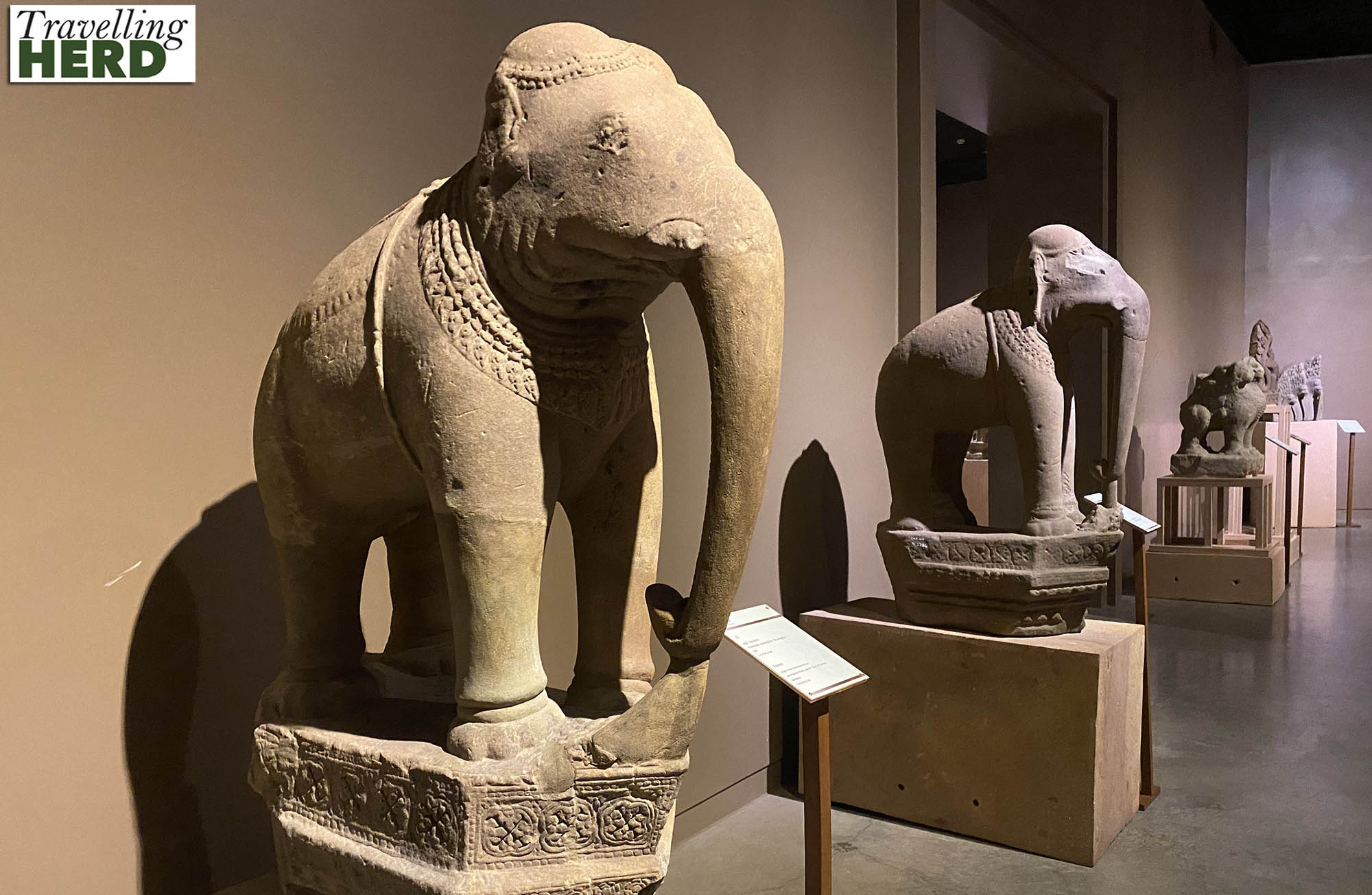
We loved learning about APOPO and the work of the scent detection animals. In amongst all the incredible historic buildings and beautiful temples, this was certainly a highlight of the trip so far.
Video of the day:
Selfie of the day:

Route Map:
